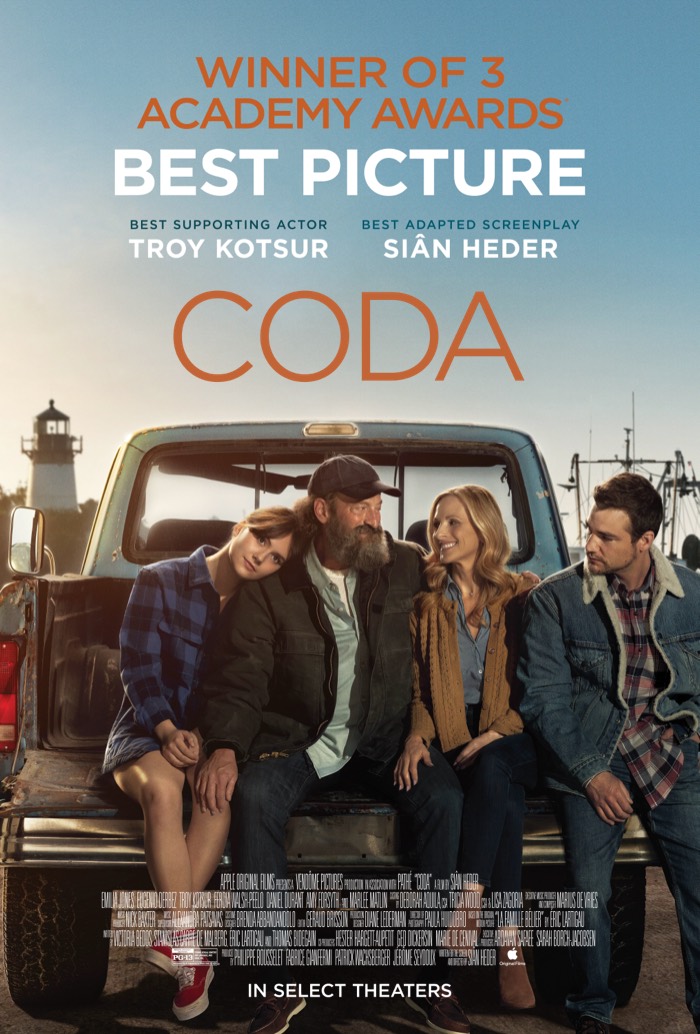HOW DEAF PEOPLE SEE CODA

When Troy Kotsur accepted his Academy Award for best supporting actor for his performance in "CODA", he became only the second deaf actor to win an
Oscar. The first was his "CODA" co-star Marlee Matlin who won in 1986 for "Children of a Lesser God." He thanked deaf theatre and screenwriter Siân Heder
in his speech for helping him perfect his skills, and he even joked he wanted to teach President Joe Biden dirty sign language. Then his speech turned
personal. “My dad was the best signer in our family. But he was in a car accident and became paralyzed from the neck down. And he no longer was able to
sign. Dad, I learned so much from you. I’ll always love you," he said. "You are my hero." After that touching moment, he shared his historic win with those
who helped him succeed. “This is dedicated to the deaf community, the CODA community, and the disabled community," he said. “This is our moment.”
CODA has certainly sparked conversations in the deaf community. The film focuses on Ruby, a child of deaf adults, and her relationship with her parents and
brother, all of whom are deaf. The movie also won Best Picture and Best Adapted Screenplay for Heder's work. Audiences also loved the film, and many
appreciate that deaf actors play all the deaf characters which doesn’t occur as much as hearing people might believe. “It’s fantastic that three main deaf roles
are played by deaf actors. Marlee Matlin made that happen - when she knew that Frank and Leo (the husband and son) would be played by hearing actors.
She insisted on deaf actors, or she’d walk - and she deserves so much credit for that.”
Jenna Fischtrom Beacom, 50, a deaf activist and writer in Columbus, Ohio, told TODAY via email. “Much of the interaction between the deaf actors is right on.
I loved when Jackie (Marlee Matlin’s character) gets the attention of her husband and son at the concert by whapping them on the shoulder. That whole thing
read as authentic and familiar to me.”
Having deaf actors makes some of the communication seem more natural, too. “All three deaf characters are played by three actually deaf people,” Rikki
Poynter, a 30-year-old YouTuber, writer, and accessibility expert told TODAY via email. “And when you get that right, the ASL* is right.” The deaf actors also
used their own experiences in their roles, which added richness in some scenes. “There were many incidentals, probably unscripted moments that were
authentic. The deaf roles were all filled with deaf characters, and the actors also provided feedback: their own experiences,” Fischtrom Beacom said.
One scene that felt accurate to Poynter involves the family listening to “loud bass music, showing that one of the ways we enjoy music is through vibrations.”
And she appreciates how the movie tackles sex and disability in a way that most movies and TV shows don’t. “Sex is such a taboo topic in general but seems
to be especially more so when it comes to disabled people,” she said. “I’m glad they did away with that ‘disabled people can’t be sexual or desirable’
nonsense.”
While the movie did some things well, some moments didn't feel as realistic. Fischtrom Beacom thought that the main character Ruby used sign language like
a “beginner”, and some of the signings, even among the deaf characters, felt off. “It was evident that the dialogue was written by a hearing person. ASL and
English are very different languages, with not only distinct syntax, grammar, etc., but also their own idioms,” she said. “There is overlap, and anything can be
interpreted from one language to another. But many phrases just don’t ‘work’ well when they’re supposed to be coming from culturally deaf-ASL users.”
And the movie focuses on a plot point that might feel overdone to some. “The ‘deaf people can’t enjoy music,’ a stereotype that most music-and-losing
hearing movies do,” Poynter said. “It’s so tiring.” Poynter reviewed "CODA" for her YouTube channel, where she often reviews movies and discusses disability
and accessibility, including her efforts to improve closed captioning. Even though the movie feels like inspiration porn, she believes it’s worth seeing. “It’s not
a perfect movie (is any movie, though?). But I love Daniel (Durant) and Troy (Kotsur) especially, and I grew up watching Marlee in things,” she said.
“CODA” has highlighted the need for better representation of deaf people and their stories. Fischtrom Beacom hopes that there’s room for more deaf writers,
producers, actors, and showrunners.
https://www.today.com/health/deaf-community-responds-movie-coda-starring-marlee-matlin-t230260